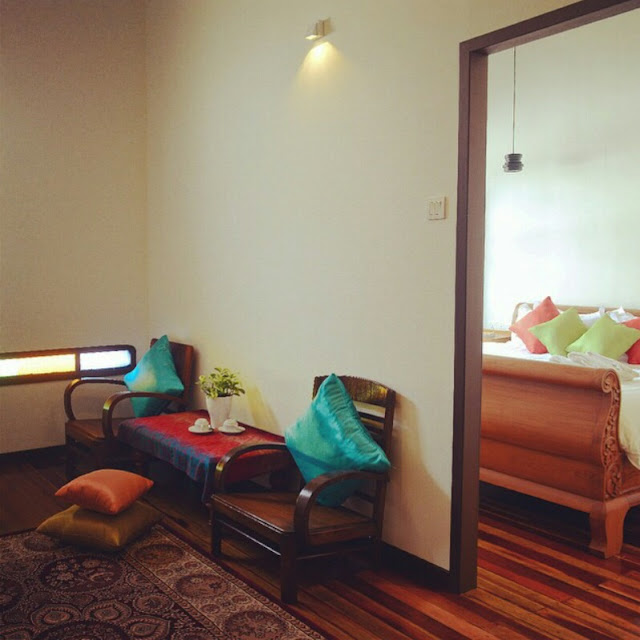Raja Khalidatul Asrin
12 / 5 /16
Kampung Gajah.
There are moments when people forget their roots which is a crying shame because our ancestors have left behind so much beauty to be unfold.
Rumah Kutai which can only be found in Perak is one good example and the management of iGrow has done a good job by showcasing it and their desa warisan is an eye opener.
There are two rumah Kutai at the desa warisan iGrow. One has become a home for the management and another one is a show house.Kutai means old,though some believe that is an Achinese word.The oldest Rumah Kutai in Perak is about 200 years old and is still standing strong in Pasir Salak.It is said that the house was built in 1800 by Penghulu Anjang Padam Pelita.
The Rumah Kutai at iGrow is 150 years old and it was left behind in a village about 5 km from the desa warisan complex."We bought it from the ancestors of the house and we rebuild it at our place in order to preserve our heritage.Everything about the house is as it was.Nothing was removed or changed. " said Nordin Abdul Malik, Executive Chairman for iGrow.
The house is made from bamboo and tepas and are pegged together without using nails. Inside the house is just like how it was.Walking up the tiny stairs and stepping inside seems magical.The kitchen with the wooden stove and everything seems surreal.
The complex are used by students of architecture from Uitm and other universities to study the structure of the old house.
The other rumah Kutai is used for students to spend the night so as to let them get the feel."The students were taken back on a journey back to their grandparents era.They love the idea of sleeping on matresses on the floor in a group." he said.
"When we dismantled the house to move it to our complex we found a shilling dated from 1870 underneath the pole of the house.That was their identity so to speak and that's how we know their age."said Nordin
The chalets at the complex are made of woods that are more than a hundred years old and they try their best to preserve the Malay heritage for the new generation.It is also part of a history lesson for students that goes to iGrow.
"The woods that are used for the chalets were taken from Bukit Tunggal a long time ago.Back then the woods were down by buffaloes. "he said
The chalets are simple kampung style,with wooden floor and a double bed and a single bed.It is really a Malay heritage sort of place.The guest will be shown around by the students.Food are served by students too.
There are about 400 students at iGrow and they learned about culture and hospitality. Some of the students are from Sabah and Sarawak and so tourist gets to see the traditional dance from Sabah and Sarawak which is very impressive. The students are mostly from form four and above that has taken lessons in vocational studies.
The farms at iGrow have herds of goats and of course they are surrounded by palm oil trees.Everything about the place is naturally beautiful and the chalets and 'rumah Kutai ' are true Malaysian identity . International tourist should visit and stay in this place in order to get to know and learn Malaysian culture.
Ends







